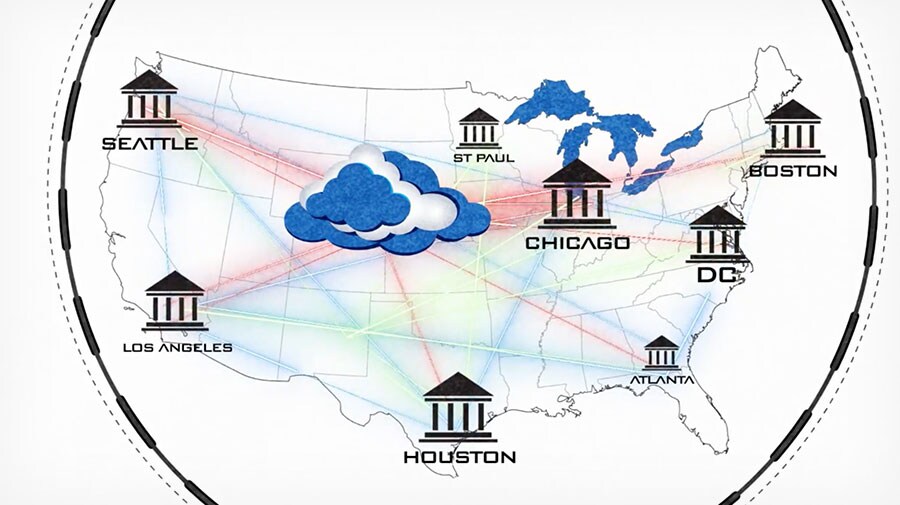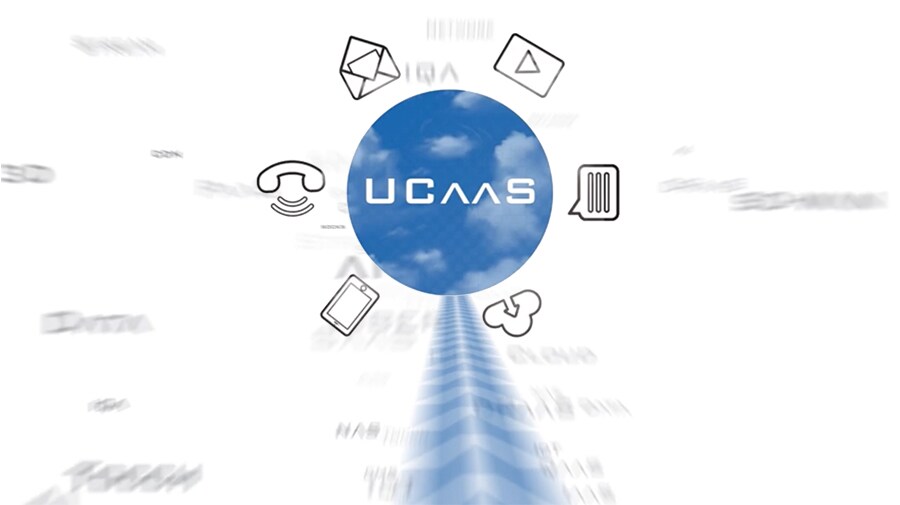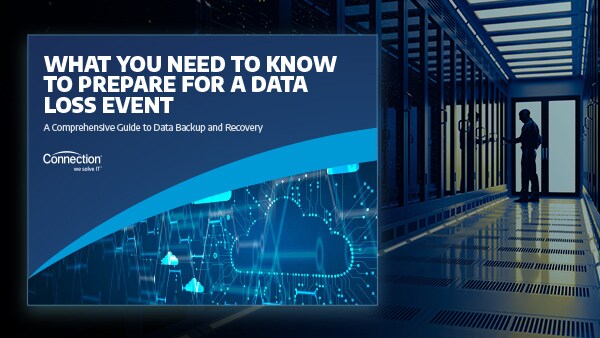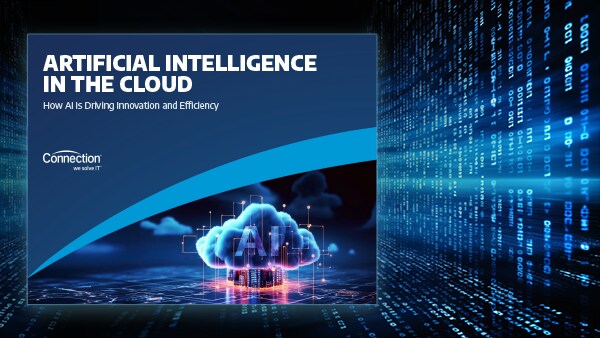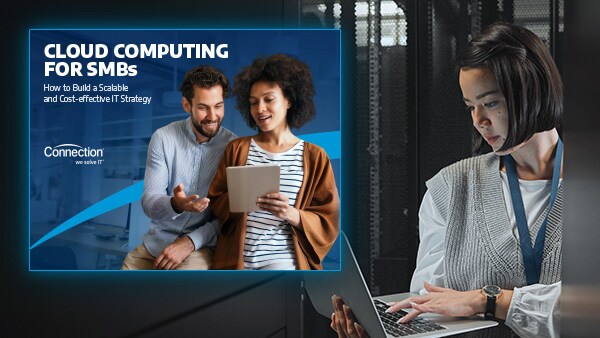Cloud Technology
Cloud Computing Technologies Powering Businesses

- Software as a Service (SaaS)
- Infrastructure as a Service (IaaS)
- Platform as a Service (PaaS)
- Backend as a Service (BaaS)
- Security as a Service (SECaaS)
- Desktop as a Service (DaaS)
- Database as a Service (DBaaS)
- Disaster Recovery as a Service (DRaaS)
- Unified Communications as a Service (UCaaS)
- Desktop Virtualization Infrastructure (VDI)
With an experienced cloud services partner on your side, you’ll maximize the benefits of cloud technology implementations and mitigate the risks. Connection is your one stop for all things Cloud Technology.
The Cloud Advantage: 5 Key Trends That Will Define 2026
Heading into 2026, organizations are abandoning rigid, one-size-fits-all approaches in favor of flexible, intelligent cloud architectures designed to meet the needs of modern, distributed enterprises. According to a recent survey of over 1,400 IT decision-makers, more than 90% are actively reworking their cloud strategies—with hybrid and multicloud environments, AI copilots, edge-native workloads, and sovereign cloud investments leading the way.
As cloud technologies evolve to support real-time responsiveness, global data governance, and industry-specific demands, businesses must think beyond infrastructure and embrace the cloud as a strategic operating model.
The following five trends reveal how cloud is transforming from a technology platform into a business-critical force shaping growth, resilience, and competitive edge in 2026:

1. The Rise of Multicloud and Hybrid Cloud Strategies
Businesses are increasingly adopting multicloud and hybrid cloud strategies not only to enhance flexibility, avoid vendor lock-in, and improve resilience, but also to support real-time workload agility across increasingly complex environments. One survey found that 82% of companies use a multi-cloud approach, while 90% of organizations are expected to adopt hybrid cloud by 2027.By distributing workloads across multiple providers, organizations can mitigate the risks of relying on a single vendor while fine-tuning performance and cost-efficiency. Hybrid strategies enable the retention of critical workloads on-premises while integrating with public and private clouds, allowing teams to balance security, compliance, and operational priorities as needed.
What sets today’s strategies apart is the growing maturity of cloud interoperability and dynamic workload orchestration. Emerging platforms now support real-time synchronization and policy-based workload mobility, enabling businesses to shift applications and data between environments instantly in response to demand, availability, or cost. This level of agility reduces complexity while empowering organizations to take full advantage of best-in-class services across providers—maintaining continuity, boosting scalability, and turning cloud infrastructure into a real-time, adaptive resource.
2. Edge Computing Gains Traction
In 2026, edge computing is set to evolve from merely improving latency into a foundational platform for edge-native applications—software purpose-built to process and act on data directly at the edge device, gateway, or micro data center, reducing reliance on centralized cloud systems.Rather than functioning in isolation, today’s edge infrastructure is deeply integrated into hybrid workload strategies, dynamically routing computing tasks between edge and cloud environments based on factors like proximity to users, compliance needs, bandwidth, and performance demands. Providers now offer unified control planes to simplify this hybrid orchestration, ensuring seamless workload placement and management across environments.
Industries such as healthcare, manufacturing, and retail are already leveraging edge-native, hybrid architectures:
- Healthcare: Real-time patient monitoring and diagnostics are being handled at the edge—through devices and network nodes—to enable immediate care responses with reduced latency.
- Manufacturing: Predictive maintenance systems deployed at machine-level analyze performance data locally, preventing downtime and increasing efficiency without constant cloud dependency.
- Retail: Edge-native apps enable smart shelves, personalized promotions, and real-time inventory insights at points of interaction, delivering immediate customer benefits.
These sectors are deploying hybrid edge-cloud models to combine real-time processing at the edge with centralized analytics and long-term storage in the cloud, offering a powerful balance of speed, control, and scalability. Global investment in edge computing infrastructure is projected to reach $378 billion by 2028, up from $228 billion in 2024, reflecting a significant shift toward edge-native and hybrid cloud architectures.
3. AI and Machine Learning Driving Cloud Automation
Artificial intelligence (AI) and machine learning (ML) will continue to reshape cloud management in 2026, but the focus has shifted from basic automation to Cloud Automation 2.0: a new phase defined by AI copilots, agentive infrastructure, and self-optimizing systems. These intelligent assistants are now embedded across DevOps and cloud platforms, helping teams automate resource provisioning, deployment, monitoring, and troubleshooting in real time. AI-powered automation tools still play a vital role in cost optimization, workload balancing, and predictive scaling, but now go further, learning from usage patterns and proactively adjusting infrastructure to prevent failures and minimize cost.The rise of agentic DevOps, where AI agents assist across the software development lifecycle, is accelerating cloud-native innovation, reducing human intervention in everything from code deployment to infrastructure monitoring. This is especially valuable in industries like e-commerce, media streaming, and financial services, where workloads are dynamic and performance expectations are high. AI copilots help maintain seamless uptime, reduce manual toil, and enable faster incident response—driving cloud operations that are not just automated, but increasingly autonomous.
4. Enhanced Cloud Security and Zero Trust Architecture
As cloud adoption expands, enterprises face growing complexity in securing distributed environments, making traditional perimeter-based models insufficient. Secure Access Service Edge (SASE), which integrates SD-WAN, Zero Trust Network Access, firewall-as-a-service, and cloud access security broker (CASB) capabilities into a unified, cloud-native framework, has become a key solution. A recent report found that 62 percent of organizations now prioritize SASE for improving cloud visibility and secure access, while 45 percent are actively using it to protect hybrid and distributed workforces.Central to SASE is the zero trust model, which requires continuous verification of identity, device health, and contextual risk before granting access. Artificial intelligence strengthens this approach by analyzing behavior, identifying anomalies, and enforcing policies in real time, without compromising performance.
AI-powered platforms monitor user activity and network traffic to detect threats such as zero-day exploits and lateral movement. These systems automatically respond to suspicious behavior by revoking access, triggering containment, or escalating alerts to security teams. This combination of SASE infrastructure, zero trust principles, and intelligent threat detection provides consistent and adaptive security across cloud, on-premises, and edge environments, helping organizations stay ahead of emerging risks without sacrificing agility.
5. Industry-specific Cloud Solutions on the Rise
Cloud sustainability is becoming a top priority for IT and business leaders as energy demands rise and regulatory pressure intensifies. In 2026, organizations will be placing greater emphasis on reducing the environmental impact of their cloud operations by focusing on data center efficiency, carbon tracking, and compliance with emerging climate-related regulations.To meet these goals, cloud providers are investing in smarter, more sustainable infrastructure. Techniques like AI-assisted cooling, intelligent workload placement, and renewable energy sourcing are being used to improve energy performance and reduce waste. Industry-standard metrics such as Power Usage Effectiveness (PUE) and Carbon Usage Effectiveness (CUE) are gaining traction, while a platform like Google Cloud Carbon Sense helps customers monitor energy consumption and emissions in real time.
At the same time, carbon footprint tracking is becoming a built-in feature of modern cloud services. Businesses are beginning to monitor Scope 1, 2, and 3 emissions across regions and workloads, using this data to prepare for reporting requirements like the EU’s Corporate Sustainability Reporting Directive (CSRD) and California’s SB-253 climate legislation.
As sustainability becomes a central pillar of digital transformation, cloud strategies in 2026 must account for environmental impact alongside performance, cost, and security. Organizations that take a proactive approach to energy management and emissions transparency will be better prepared to meet stakeholder expectations and long-term growth goals.
Cloud in 2026: A Strategic Imperative, Not Just an IT Decision
Cloud technology is no longer just about infrastructure—it's a strategic backbone for agility, security, and innovation in a rapidly evolving digital economy. Organizations that invest in scalable, AI-augmented, and policy-aware cloud architectures will be best equipped to adapt to dynamic workloads, regulatory shifts, and competitive pressures.Cloud Technology Partners
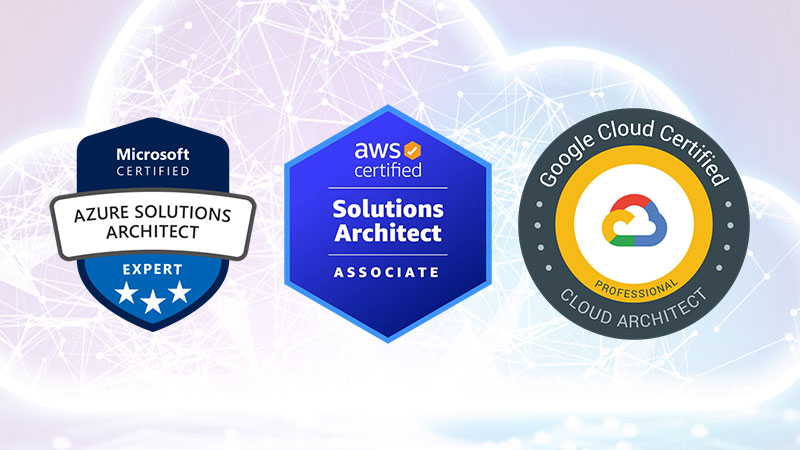
Dedicated Specialty Teams for Azure, AWS, and Google Cloud
Connection offers standard and specialty services for Azure, AWS, and Google Cloud. We are an Azure Expert MSP. We are also an AWS Partner and a Google Partner.
Cloud Provider
Select a Solution Area to Review
Solution Area |
|
|
|
|---|---|---|---|
| Assessments | |||
| Migration | |||
| Managed Services | |||
| DevOps | |||
| Disaster Recovery | |||
| Security | |||
| VMware | |||
| Specialty Enablement | Windows, SQL Server Migration, and Azure Virtual Desktop | AWS Marketplace and Lamba | Custom enablement for education, Chrome, and Google Workspace |
WEBINAR SERIES
The Azure Advantage: Futureproof Your Business with Microsoft Azure
Register for our exclusive on-demand webinar series designed to simplify your journey to the cloud. In this four-part series, you will gain in-depth insights into the benefits of Microsoft Azure, including enhanced scalability, robust security, and cost-efficiency.Topics Covered:
- Innovate and Scale: Optimize your infrastructure
- AI and Machine Learning: Drive innovation with Azure’s AI and machine learning capabilities
- Tailored Support: Connection services customized to fit your business needs
- Real-world Success: Hear about organizations that have successfully transitioned


Google Cloud Partner
As a Google Cloud Partner, Connection’s team has demonstrated higher levels of expertise and performance to deliver a wide scope of GCP services at competitive prices for our customers. In addition to GCP, we’ve partnered with Google for the last decade to also offer custom enablement for Google for Education, Chrome, and Google Workspace. To help you get the most from the Google Cloud, we have a team of engineers, hired specifically for their experience with GCP, who are certified and Google-verified to handle configurations and DevOps for the platform.When our customer Prenda realized that they would not be able to access the state’s online testing resources using their current Chromebook devices and licenses, our team was able to set them up with Google for Education licenses that would aloow them to centrally manage school Chromebooks and adjust settings as needed in order to gain access to the testing resources. Read our case study for the full story and learn how we can help set your organization up for success with Google Cloud solutions.
Virtualization
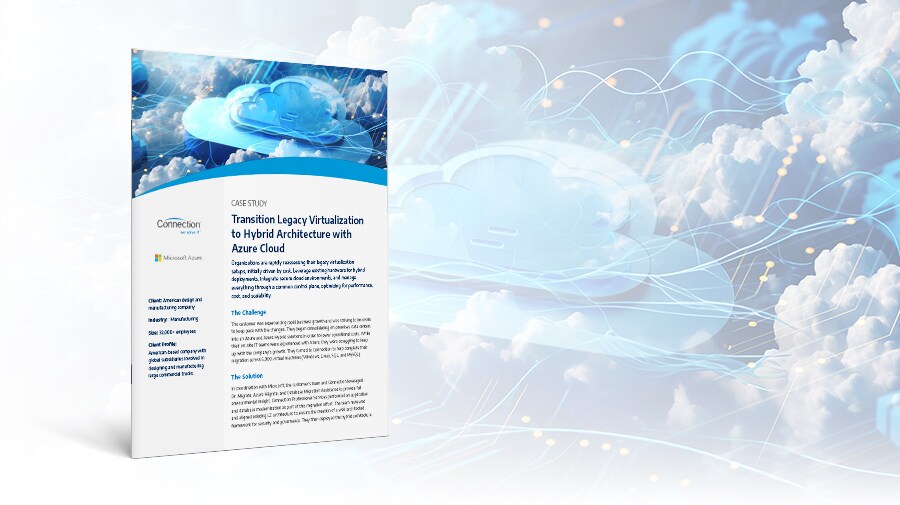
Transition Legacy Virtualization to Hybrid Architecture with Azure Cloud
Organizations are rapidly reassessing their legacy virtualization setups, initially driven by cost. Read our case study to learn how we helped one customer leverage existing hardware for hybrid deployments, integrate secure cloud environments, and manage everything through a common control plane—optimizing for performance, cost, and scalability.Parallels Remote Application Server (RAS)
Empower your employees to work from home instantly, while improving efficiency, productivity, and data security. Parallels RAS is a powerful all-in-one virtual desktop infrastructure solution that delivers applications and virtual desktops to any device—anytime, anywhere.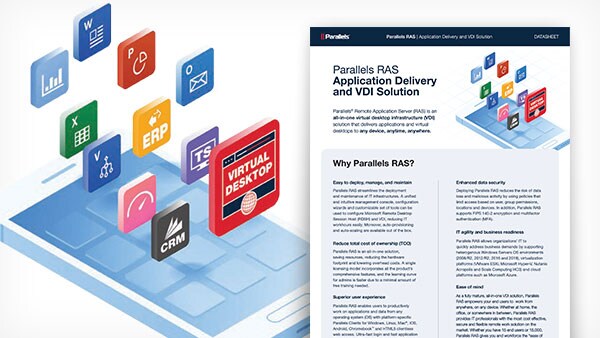
Parallels RAS Application Delivery and VDI Solution
Data Sheet
Why Parallels RAS?- Easy to deploy, manage, and maintain
- Reduce total cost of ownership
- Superior user experience
- Enhanced data security
- IT agility and business readiness
- Ease of mind

How Parallels Can Help Your Business Navigate a Post-COVID-19 World
White Paper
Many businesses are deciding whether temporary measures should evolve into permanent ones—as companies adopt long-term work-from-home policies. But these remote workplaces can only be effective if they are secure, easy to deploy, and allow employees full access to every application they need to successfully perform their roles.Anything as a Service (XaaS)
Your source for all things Cloud, Colocation, and Connectivity.
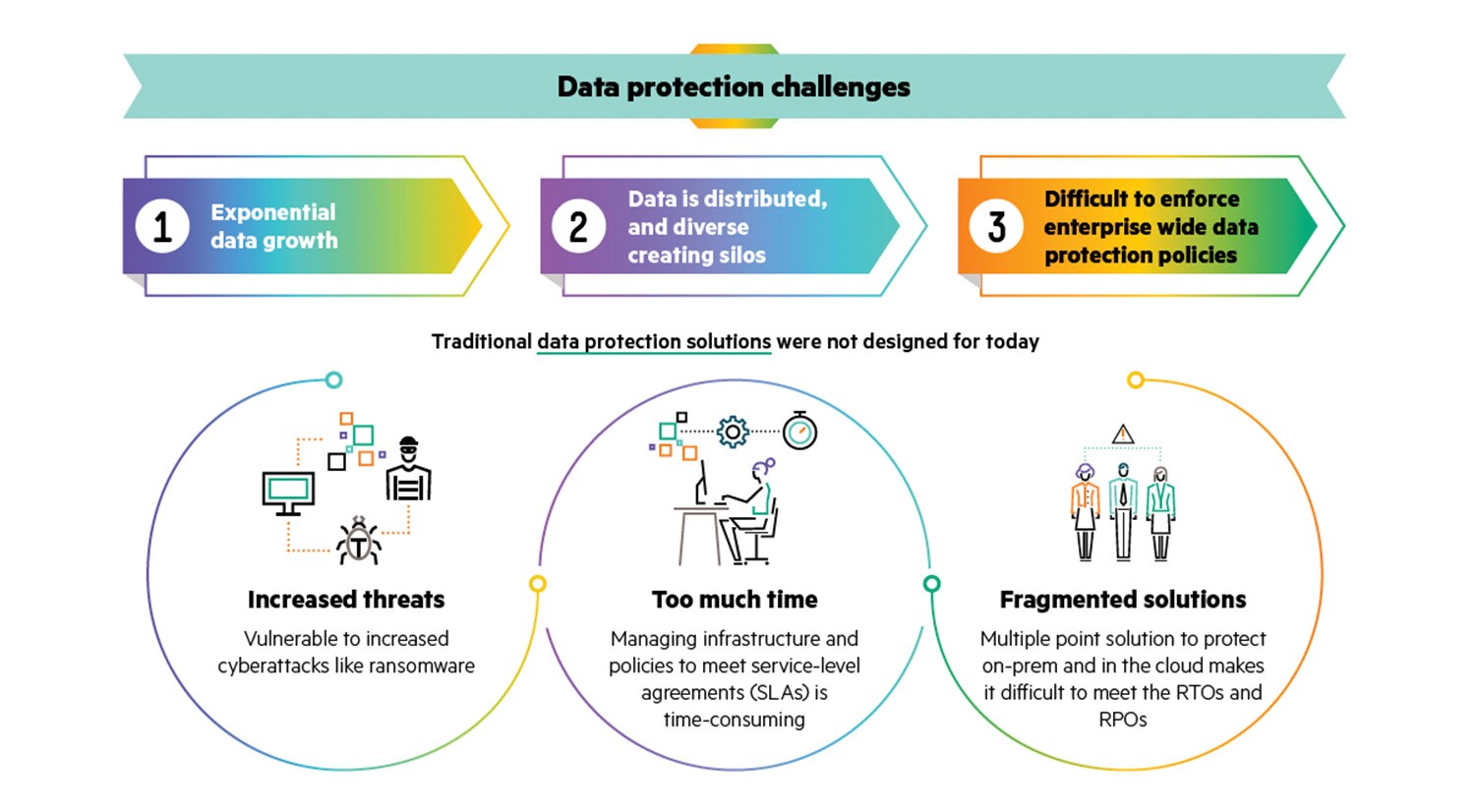
Backup as a Service (BaaS)
Traditional backup approaches are not designed for today’s IT environment. A backup and recovery plan is essential for your organization. Data loss events can happen at any time and take a variety of forms, from system failures to human error, cyberattacks, and more.The need for a robust backup and recovery strategy is undeniable, but finding the right solution to fit your needs can be difficult. The right solution should provide highly-efficient data security. It should also be simple to manage, scalable, futureproof, and much more.
Learn more about HPE GreenLake to see why it is the ideal BaaS solution for your organization.
A typical wide area network often includes a mix of private circuits, like MPLS and point-to-points, as well as public internet circuits, like fiber, copper and cable, all spread across wide geographic locations.
With cloud-based services becoming more popular, bandwidth requirements have exponentially increased, but each data packet is still routed without any consideration of other networks. This means that dozens of connections might lie dormant, while another is weighed down with traffic.
The solution to this inefficiency is software-defined wide area network. SD-WAN is an intelligent solution that efficiently manages all network connections and policies as a whole, reducing costs and harnessing all available bandwidth.
Picture your entire network as super highways in the metropolis of their enterprise. If one highway suffers from congestion, SD-WAN is the navigation that automatically routes data to a faster highway with less traffic. Even if one highway goes offline, traffic will still be securely routed to its destination, replacing need for VPNs.
SD-WAN can also prioritize critical applications like voice for best customer experience. SD-WAN harnesses the total throughput of all networks with minimal management and maximum data reporting. You can swap or supplement existing networks for inexpensive public connections, optimizing performance and cost. Once configured, deploying additional branches is quick and dynamic.
What complaints do users have regarding network or application performance? Which connections are underutilized or only used for backup? What are your mission-critical applications and where are they located? What are your biggest challenges in managing network costs? If you could improve one thing about your network, what would it be?
Software-Defined Wide Area Networking (SD-WAN)
SD-WAN provides numerous benefits, including enhanced network efficiency and reduced network operating costs. But the selection of the right SD-WAN solution can be time-consuming and complex. There’s a lot of criteria to consider, including applications supported, security and geographic needs, preference for self or turnkey management, and more.Unified Communications as a Service (UCaaS)
A Guide to Maximizing UCaaS Implementation
There are a number of different products and services that make up Unified Communications as a Service, but the true value of UCaaS lies in its interoperability and integration. Combining the various features into a fully compatible communications solution displaces a series of point products, simplifies management, strengthens interoperability, and in many cases, reduces cost and complexity.The AVANT Research and Analytics Report offers a great overview of the UCaaS industry, including the results of an extensive market survey. However, if you’d like more direct assistance, reach out to a Connection specialist to start (or upgrade) your UCaaS implementation today.
With the accelerating pace of change in IT, it has never been more critical to create value with your communication applications. For many years, phone lines and legacy PBX hardware systems were able to meet these needs. These days, those are the table stakes. With demanding employee and consumer level expectations and exponential potential for business growth, legacy hardware systems simply cannot keep up with the pace of change to give your business the edge it needs to stay competitive. This is especially true when looking at increased needs for mobile devices and mobile workforce. The solution is unified communications as a service or UCAAS.
UCAAS is a managed cloud-based solution helping businesses take full advantage of ever-changing communication needs. UCAAS always stays up-to-date, eliminating the need to pay and implement upgrades. Additionally, native integrations to cloud platforms such as Salesforce, Slack, Office 365 or Google apps further enhance end-user productivity, while allowing you to retain your existing legacy on premise investments, such as handsets and overhead paging systems. Voice, fax, social messaging, conferencing, and more are combined into a unified application experience accessible from any device anywhere.
With UCAAS, your communication platform becomes a business analytics tool, allowing you to delve into your business call details with customizable dashboards and artificial intelligence agents, so management can work smarter and allocate resources with confidence. The result, IT is freed for managing hardware and servers to delivering strategic business needs. Finance is freed from planning capital expenditures to analyzing business impacts, and the leaders are free from the limitations of isolated systems to anywhere communications. UCAAS allows you to stay ahead of the accelerating pace of change.
Is your current communications platform up-to-date. Tell me about the last time you went through an upgrade. What were the pain points? What are your biggest challenges with your current communication platform? What problems are disparate phone services causing in your business? What integration and reporting insights do you expect with your CRM and business tools? What are your internal users' and end customers' opinions of your communication experience?
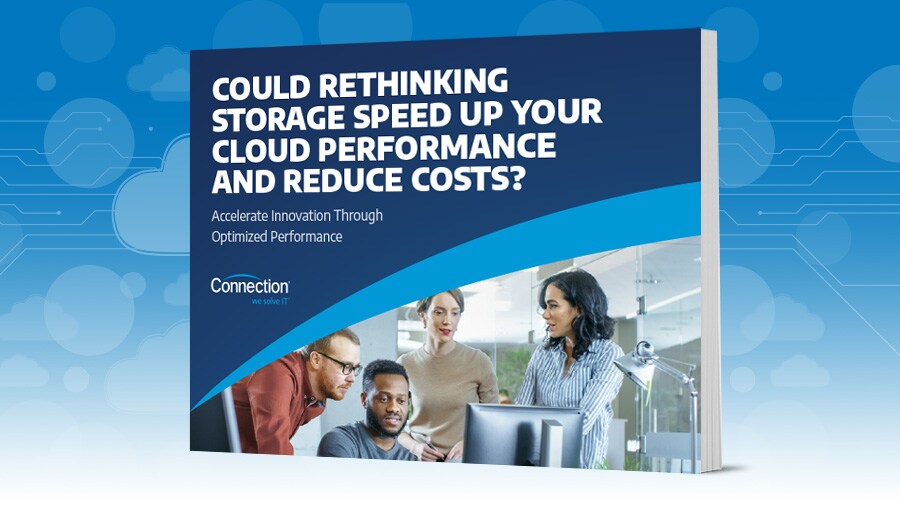
Could Rethinking Storage Speed Up Your Cloud Performance and Reduce Costs?
Businesses move their applications and data to the cloud for agility, cost savings, and streamlined performance. Initially, the gains organizations make with cloud computing can have a major impact on both increasing performance and reducing costs. Yet over time, cloud performance can slow—and costs can rise—as maturing cloud ecosystems aren’t maintained or optimized. If you’re interested in getting more from your cloud deployments, read our free eBook to discover why storage can be the key to unlocking effective performance and affordable rates.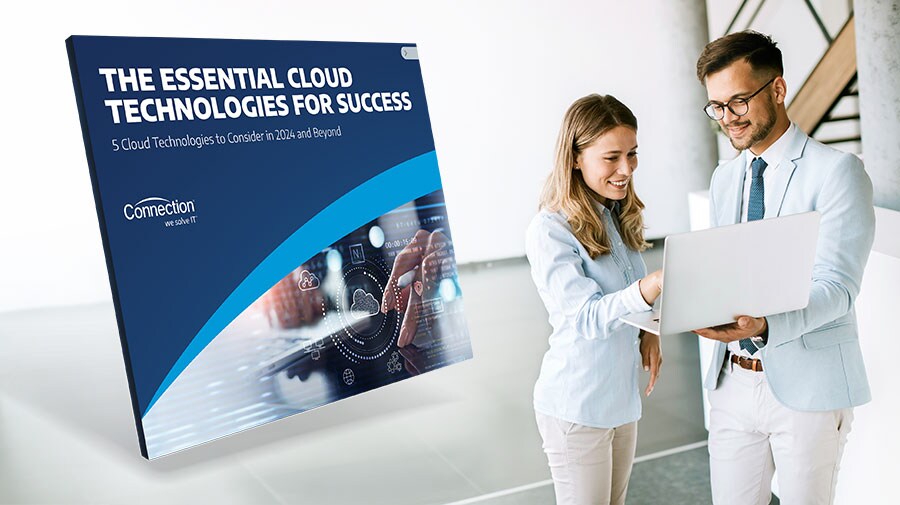
The Essential Cloud Technologies for Success
As the demand for agile and scalable infrastructure has increased and there’s been a dramatic shift to remote and hybrid work solutions, cloud adoption has evolved from a technology strategy to a business strategy. Cloud adoption is now not only pervasive, but the default. Read our free eBook to discover the 5 cloud technologies to consider in 2024 and beyond.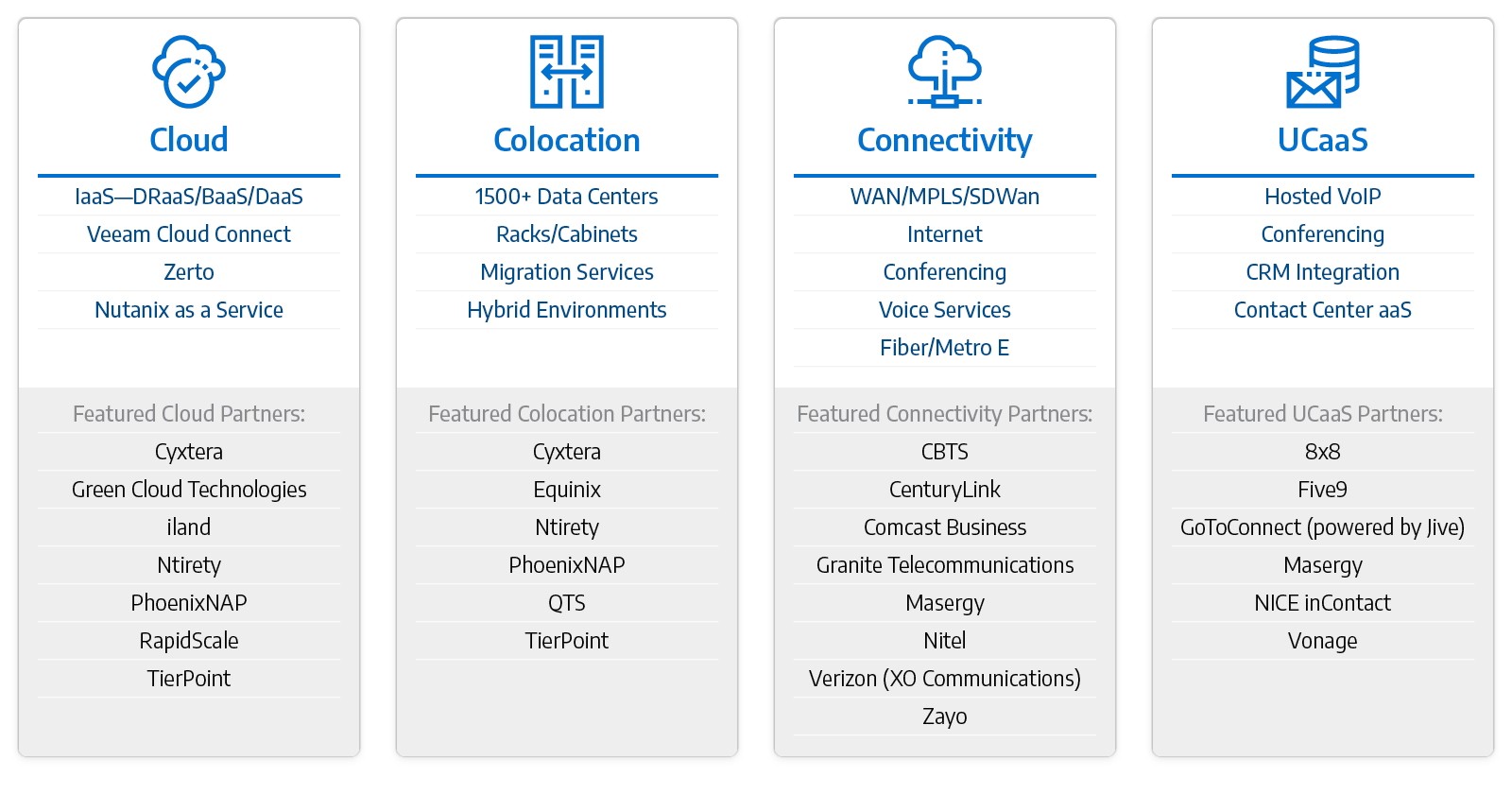
Cloud Security
Assess and mitigate your organizations’ security risk and ease the burden of protecting your most critical assets, including data availability and privacy.
Learn how your company can identify and eliminate cybersecurity risk.
Has your organization taken the time to identify existing security flaws, device and network vulnerabilities, and malicious network activity?
Discover how to secure your IT infrastructure.
Don’t wait―proactively ensure your business is meeting its regulatory requirements.
Get expert help to manage your risk and stay in industry compliance.
Does your organization need help responding to security threats?
Get expert help to monitor and manage security events.
Identify potential redundancies and inefficiencies before they impact the bottom line.
Learn how to unify your stack to reduce the complexity of your technology.
Connection Cloud Services
Whether you are beginning to determine the best cloud model to suit your needs, assessing which application workloads can be safely moved to the cloud, or considering which cloud service provider would serve the best return on your investment, our cloud experts can help.
Learn how your company can maximize its investment in the cloud.
Does your company have significant investments in Microsoft products, services, tools, and frameworks?
Learn how to easily migrate your workloads to Azure.
Effective management is needed to get the most out of your company’s cloud investments.
Get expert help to manage operations, strengthen security, and more.
Successful cloud migrations require understanding how cloud strengths and constraints align with your application portfolio.
Get expert help to map the optimal cloud migration path.
Does your company utilize VMware in your on-premises data center?
Find out if VMware Cloud on AWS is the right fit for your business.
Cloud Technology Resources
Connection Community
Preparing for Microsoft Volume Licensing...
The world of Microsoft licensing is evolving once again, and this time the changes are both sweeping and significant for... Read More
Future Proof Your Business with Microsoft Azure
Keeping up with ever-evolving cloud technology is imperative for businesses to thrive. That’s why we’re excited to introduce our four-part... Read More
The Evolution of the Microsoft Partner Ecosystem
With the dust settling from the recent celebration of Microsoft’s 50th birthday in April, I thought it would be timely to... Read More
Transferring Your Microsoft Enterprise...
April 2025 Announcement Microsoft has introduced a new process allowing partners to transfer online services from an Enterprise Agreement to... Read More
How Is Your MSP Managing Your Azure Workload?
Clients rely on their managed service provider (MSP) to oversee critical workloads in Azure—yet few know how the providers work... Read More



